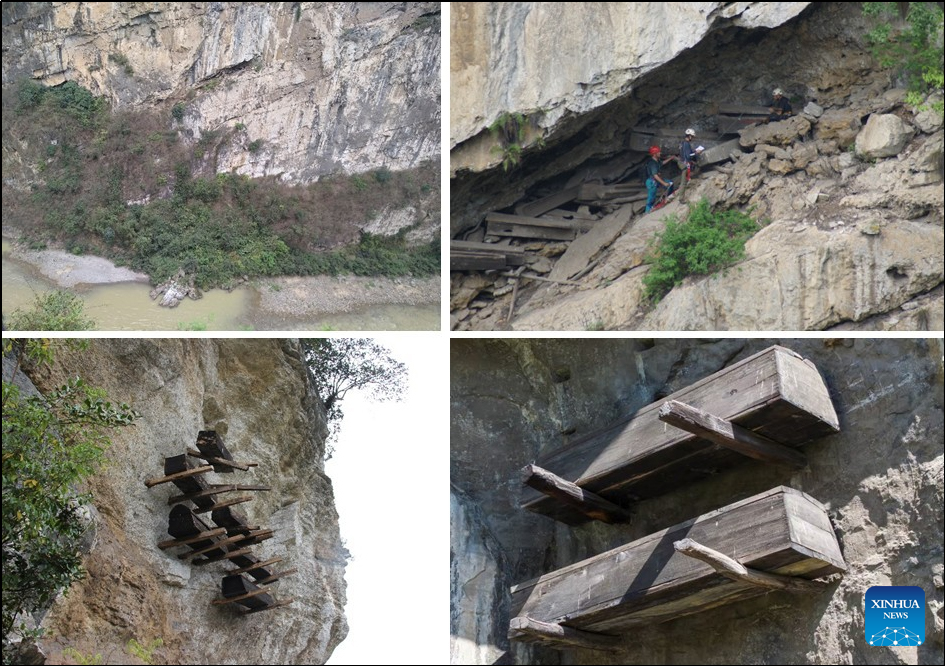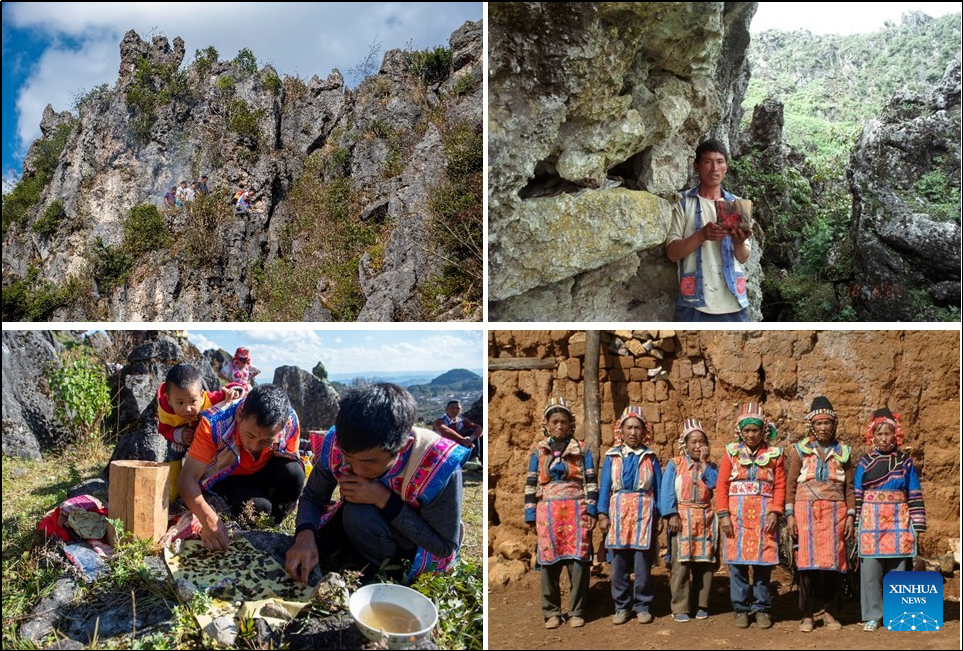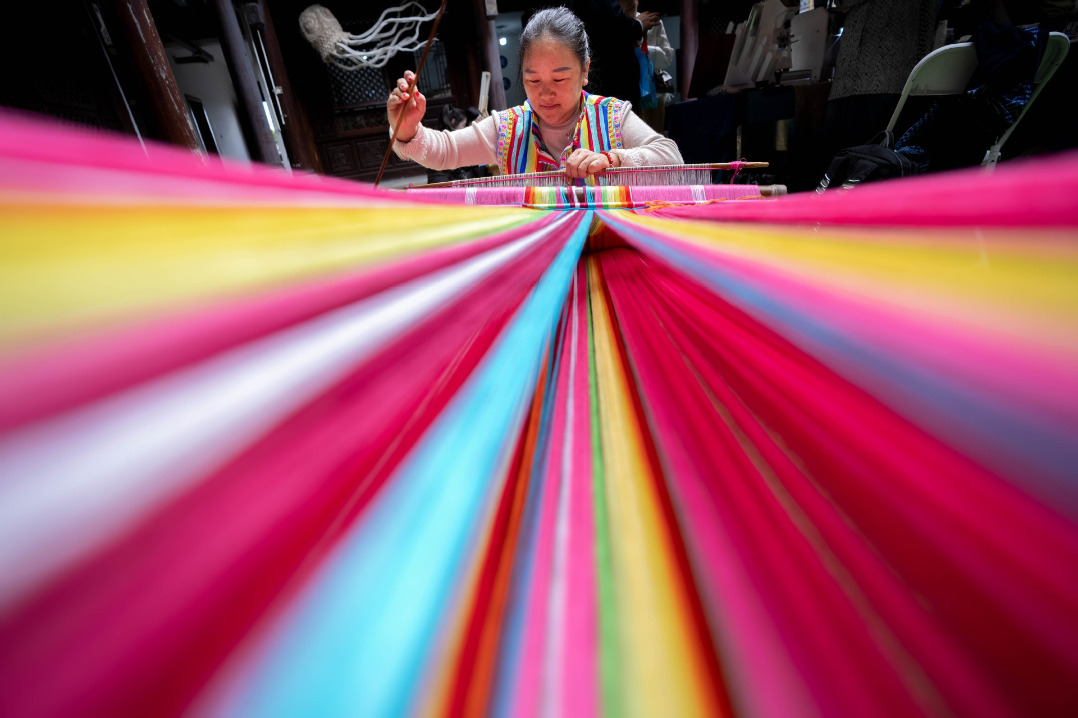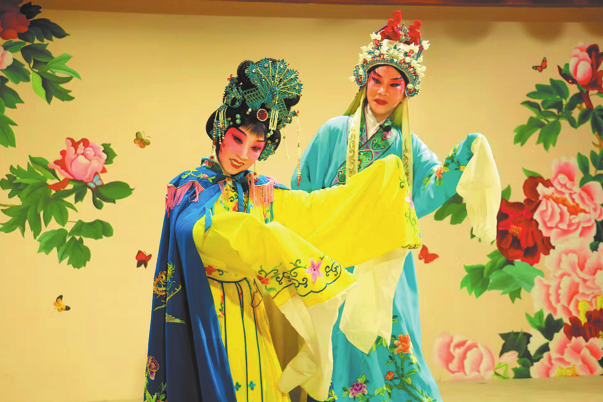Genomic study links China's ancient hanging coffins to modern community


KUNMING -- A Chinese-led study has uncovered a genetic lineage linking the mysterious practitioners of the millennium-old hanging coffin custom and a modern community in Southwest China, shedding light on a broader genetic and cultural network underlying this distinctive mortuary tradition across southern China and Southeast Asia.
Published last Thursday in the scientific journal Nature Communications, the study is the first of its kind to confirm a direct genetic link between ancient hanging coffin practitioners and modern people at the nuclear genome level, according to the Kunming Institute of Zoology (KIZ), Chinese Academy of Sciences, in Southwest China's Yunnan province.
Practiced across southern China, Southeast Asia and the Pacific for approximately 3,000 years, the hanging coffin tradition is a distinctive culture featuring the placement of coffins on cliffs, in caves or rock crevices along rivers and steep mountainsides.
In China, this culture has often been associated with the ancient Bo people, a group that inhabited southwest China and largely vanished from the historical record by the end of the Ming Dynasty (1368-1644), said Zhang Xiaoming, a researcher at the KIZ and the study's corresponding author.

Noticing a proclaimed modern Bo community with similar traits in Yunnan province, the research team performed whole-genome sequencing on 30 members of this community and conducted nuclear DNA analyses on human remains of 15 hanging-coffin individuals from sites in Yunnan, South China's Guangxi Zhuang autonomous region and northern Thailand.
The study shows that approximately 43 percent to 79 percent of the genomic components of modern Bo individuals can be directly traced to the hanging-coffin population of the Zhaotong site in Yunnan, with other analyses indicating common ancestry of hanging coffin remains in China and Thailand, Zhang said.
The evidence supports a diffusion route of the hanging coffin culture that originated in East China's Fujian province, proceeding to reach the Yunnan-Guizhou Plateau and Southeast Asia via human migration, he added.
Researchers found that two genetically different individuals buried 1,200 years ago in the Yunnan city of Zhaotong had shared the same hanging-coffin custom, said Zhou Hui, first author of the paper at the KIZ.
These two body remains were associated with ancient farmers of the Yellow River Basin and Northeast Asia, respectively, reflecting notable cultural inclusivity in the area during the Tang Dynasty (618-907), Zhou said.
The research team will continue systematic sampling in both South China and Southeast Asia to build a comprehensive database -- integrating burial practices, population genetics and cultural transmission across China and Southeast Asia, she revealed.
- Genomic study links China's ancient hanging coffins to modern community
- China's scientific satellites yield key results, refreshing humanity's understanding of universe
- Aerial view of China's Huangyan Island in South China Sea
- Fact box: The development of the under-forest economy in China
- Psychological abuse a form of domestic violence: Top court
- Decades of effort at Saihanba repay green dividends




































